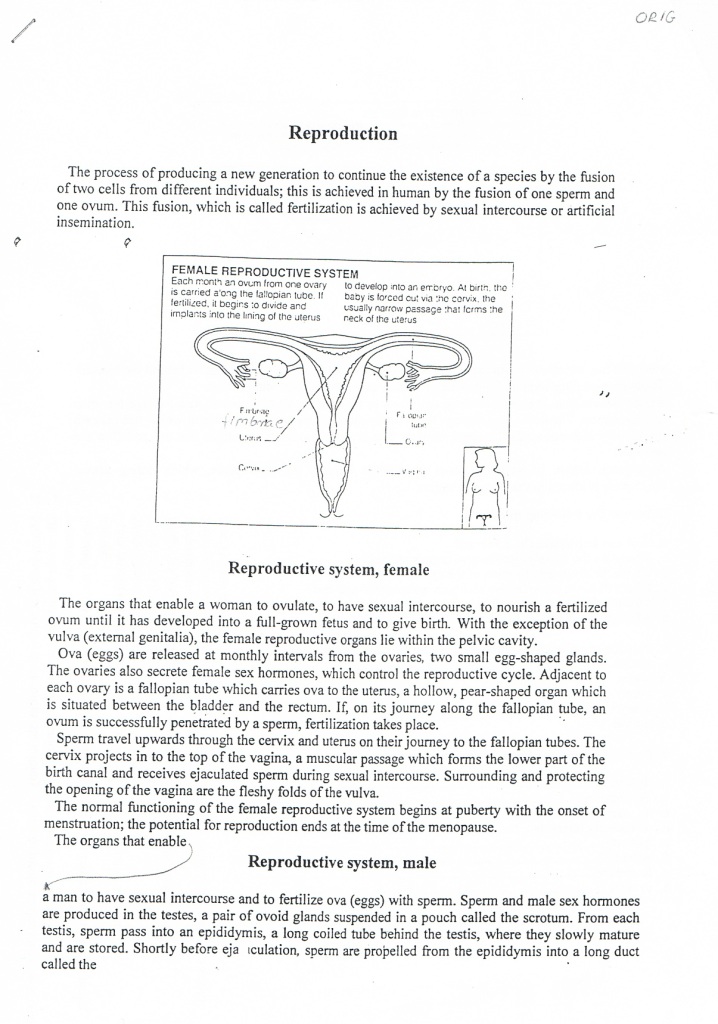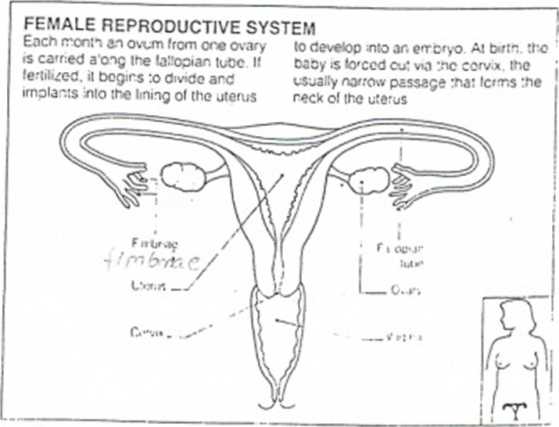rozrodczy cz 1

Od •&
Reproduction
The process of producing a new generation to continue the existence of a species by the fusion of t\vo cells from diffcrent individuals; this is achieved in human by the fusion of one sperm and one ovum. This fusion, which is called fertilization is achieved by sexual intercourse or artificial insemination.
<? —

Reproductive system, female
The organs that enable a woman to ovulatc, to have sexual intercourse, to nourish a fertilized ovum until it has devcloped into a full-grown fetus and to give birth. With the cxception of the vulva (extemal genitalia), the female reproductive organs lie within the pelvic cavity.
Ova (eggs) are released at monthly intervals from the ovaries, two smali egg-shaped glands.
The ovaries also secrete female sex hormones, which control the reproductive cycle. Adjacent to each ovary is a fallopian tubę which carries ova to the uterus, a hollow, pear-shaped organ w-hich is situated between the bladder and the rectum. If, on its joumcy along the fallopian tubę, an ovum is successfully penetrated by a sperm, fertilization takes place.
Sperm travel upwards through the cervix and uterus on their joumey to the fallopian tubes. The cervix projccts in to the top of the vagina, a muscular passage which forms the !ow'er part of the birth canal and receives cjaculated sperm during sexual intercourse. Surrounding and protecting the opening of the vagina are the fleshy folds of the vulva.
The normal functioning of the female reproductive system begins at puberty with the onset of menstruation; the potential for reproduction ends at the time of the menopause.
The organs that enable,
Reproductive system, małe
a man to have sexual intercourse and to fertilize ova (eggs) with sperm. Sperm and małe sex hormones are produced in the testes, a pair of ovoid glands suspended in a pouch called the scrotum. From each testis, sperm pass into an epididymis, a long coiled tubę behind the testis, where they slowly maturę and are stored. Shortly before eja iculation. sperm are propelled from the epididymis into a long duet called the
Wyszukiwarka
Podobne podstrony:
rozrodczy cz 2 MAŁE REPRODUCTWE SYSTEM Specm mace ;n :hc tcsts pass v.a ihc if-c voft/nc ol lho sem
Proces ewolucji opisał Charles (Karol) Darwin w swoim dziele opublikowanym w 1859 pt. The Origin of
Pavla Bartośova on the track — processing of C/A codę by least sąuare method, DPGS with condi-tion t
Figurę 2 shows a logistic chain of co-operation in the manufacturing process in a production company
The Proccss Approach - stresses of process of writing itself not the product -
form routine physical functions in the process of materiał production belong to the first class and
EXIT TEST 1 10 cz 2 20 I like the.......of this song. A special effects B role C l
COMM1SSION STATEMENT ln view of the risks of carcinogens, mutagens and substances toxic to reproduct
4. Examines the principal characteristics and processes of design disciplines including industrial d
KANADA 876638 SAKWA WACŁAW9 JUDA STANISŁAWf ŁABĘCKI MARIUSZ: Process of producing manganese cast sto
The Causes of Emancipation The whole process of the emancipation of the serfs was a slow one, lastin
172 A. Wyszomirski even the process of applying for hosting a big event (e.g. EXPO ) is important, b
dynamie muscle work. Fatigue, the factors influencing the process of fatigue, symptoms of muscle and
więcej podobnych podstron